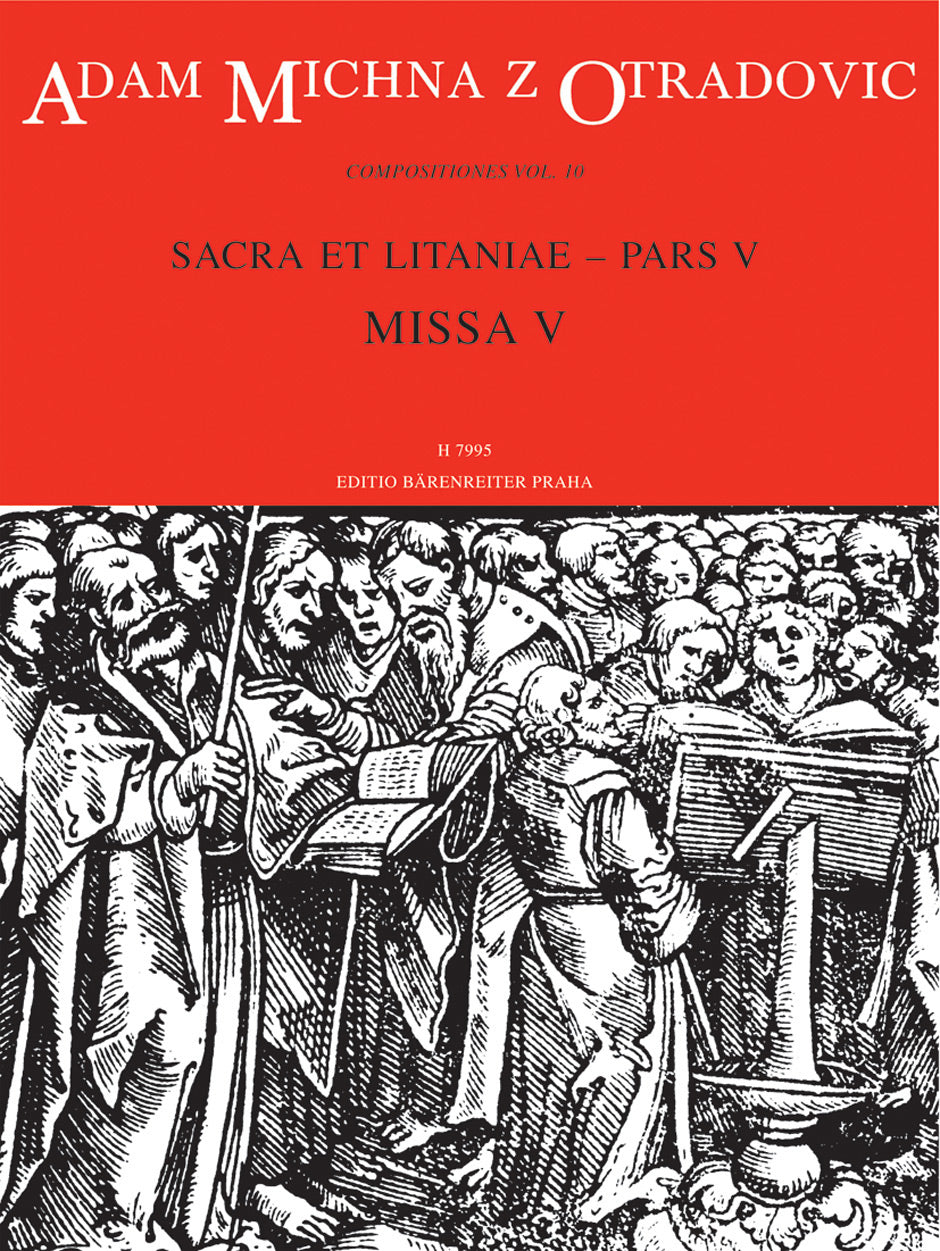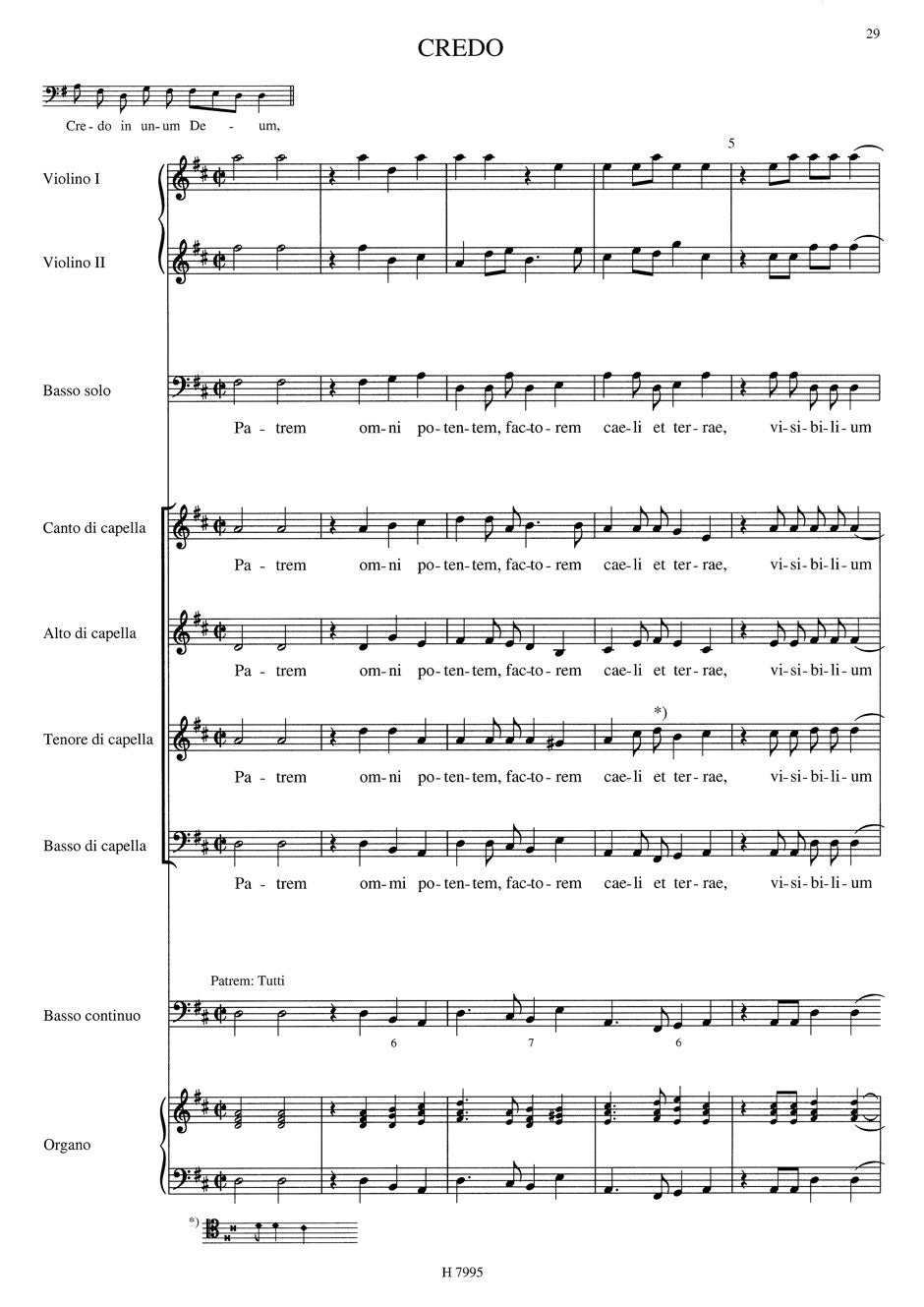Michna: Sacra et litaniae - Missa V
Compositiones Volume 10
Expected to ship in 2-3 weeks.
- Composer: Adam Michna z Otradovic (1600-1676)
- Format: Full Score
- Instrumentation: SATB Choir, Chamber Ensemble
- Work: Sacra et litaniae
- Work Language: Latin
- ISMN:
- Size: 9.3 x 12.2 inches
- Pages: 77
Description
Adam Michna z Otradovic (c. 1600–1676), the most prominent figure of Czech music of the 17th century, studied at a Jesuit school in his home town, Jindrichuv Hradec in southern Bohemia. Around the year 1633 he was nominated organist of the provost's church, a position he held until his death. Missa V is part of the last and largest collection of Michna's sacred works Sacra et litaniae, published in Prague in 1654 (containing five Masses, Requiem, Te Deum and two litanies). The piece is designed as a dialogue between the concerto solo bass and the mostly homophonous, passive four-part choir. Dramatic effect is achieved, as it is elsewhere with Michna, with the use of unusual harmonics and chromatics. The very simple instrumental accompaniment – two violins, a trombone (viola) ad libitum in the overture, and basso continuo possibly reflect the limited options of church ensembles during the Thirty Year War. As with the other sections of this largest Czech collection of Latin liturgical music, this Mass is published for the first time in the modern age, in the critical edition of Prof. V. Belský and Dr. Jirí Sehnal. The publication includes an extensive Preface and Editor's Notes (Czech, German, English).
Publishers use a lot of words to describe what they sell, and we know it can be confusing. We've tried to be as clear as possible to make sure you get exactly what you are looking for. Below are descriptions of the terms that we use to describe the various formats that music often comes in.
Choral Score
A score for vocalists that only contains the vocal lines. The instrumental parts are not there for reference. Generally, cheaper than a vocal score and requires multiple copies for purchase.
Facsimile
Reproductions of the original hand-written scores from the composer.
Full Score
For ensemble music, this indicates that the edition contains all parts on a single system (there are not separate parts for each player). In larger ensembles, this is for the conductor.
Hardcover
Hardbound. Generally either linen-covered or half-leather.
Orchestral Parts
Similar to a wind set, this is a collection of parts. In the case of strings, the numbers listed are the number of copies included, though generally these are available individually (often with minimum quantities required).
Paperback
When publishers offer multiple bindings (e.g. hardcover) or study scores, this is the "standard" version. If you're planning to play the music, this is probably what you want.
Performance / Playing Score
A score of the music containing all parts on one system, intended for players to share. There are not separate parts for each player.
Set of Parts
For ensemble music, this indicates that there are separate individual parts for each player.
Solo Part with Piano Reduction
For solo pieces with orchestra, this is a version that contains a piano reduction of the orchestra parts. For piano pieces, two copies are typically needed for performance.
Study Score
A small (think choral size) copy of the complete score meant for studying, and not playing. They make great add-ons when learning concertos and small chamber works.
Vocal Score
A score prepared for vocalists that includes the piano/organ part or a reduction of the instrumental parts.
Wind Set
For orchestral music, this is a collection of wind and percussion parts. The specific quantities of each instrument are notated.
With Audio
In addition to the printed music, the edition contains recordings of the pieces. This may be an included CD, or access to files on the internet.
With / Without Fingering (Markings)
Some publishers prepare two copies - a pure Urtext edition that includes no fingering (or bowing) suggestions and a lightly edited version that includes a minimal number of editorial markings.





